Beginning in 2014, the Evidence Based Practice Council of the University of Utah Hospitals and Clinics (UUHC) has sponsored a poster fair that encourages employees and students to share projects and research initiatives. This collection contains posters presented by University of Utah Healthcare employees and students, all of whom have led a quality improvement effort in their department and wanted to share their story.
The Wellness Champion posters are presented by Wellness Champions across departments and divisions of University of Utah Health who implement a practical and evidence-based intervention to improve health and wellness, while measuring the outcome of their efforts. Originally known as the "Resiliency Poster Fair," the program was changed to "Wellness Champion Poster Fair" in 2018.
TO
Filters: Collection: ehsl_ebp
| Title | Creator | Description | ||
|---|---|---|---|---|
| 1 |
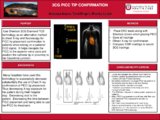 |
3CG PICC Tip Confirmation | Anson, Amanda; Draper, Tami; Lloyd, Brooks | Use Sherlock 3CG Diamond TCS technology as an alternative method to chest X-ray and fluoroscopy for PICC tip placement confirmation in patients when relying on a patients' ECG signal. It helps navigate the PICC to the superior vena cava and position the catheter tip in proximity to the CavoAtrial ju... |
| 2 |
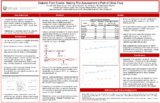 |
Diabetic Foot Exams: Making The Assessment a Part of Clinic Flow | Clark, Ann; Curran, Shaun;Wood, Lauren Wood; McAdams, Erin; Traylor, Katie; Black, Michael; ; Tsosie, Kyesha; Vrondos, Holly; Alfors, Margaret; Navas, Barbara; Schofield, Sara; Saffel-Shrier, Susan; Kiraly, Bernadette; Sullivan, Erika | Increase the rate of diabetic foot or lower extremity exams by 50% from baseline in all type 2 diabetic patients at Sugar House Clinic seen between November 1, 2015 through April 30, 2016. |
| 3 |
 |
Transitional Care Management: A Quality Improvement Program | Tran, M.J.; Selden, Melissa; Litchman, Michelle; Karren, Bethanne | Primary care providers (PCP) in private practices can have patients at multiple inpatient facilities (hospital, behavioral health center, or skilled nursing facility (SNF)) at any given time. Each in-patient facility has their own electronic health record (EHR) and communication tactics. |
| 4 |
 |
OB Team Training: Teaching a Team of Experts How To Be an Expert Team | Fisher, Janet; Meyer, Kim; Iher, Nikole; McAfee, Kristina; Stehlikova, Zuzanna; Tenort, Bernice; Clark, Erin; Lin, Stephanie;Monson, Martha; Cohen, Susanna | Every delivery that occurs in the hospital is a multidisciplinary event which may involve obstetricians, family medicine, nurse midwives, anesthesiologist, nursing, support staff as well as newborn nurses, respiratory therapists and pediatricians, |
| 5 |
 |
Implementing Field Activation - A Multi-Disciplinary Approach to Improve First Medical Contact to Balloon STEMI Protocols | Cornachione, Kristen; Young, Dawn; Owan, Theophilus | Improving first medical contact to balloon STEMI protocols takes a multi-disciplinary approach that extends beyond the hospital. It is important to have high quality data to drive subsequent quality improvement initiatives. Using such data assists in pinpointing areas that need to change in order to... |
| 6 |
 |
The Implementation and Dissemination of Evidence-Based Practice (EBP) at an Academic Medical Center: Creating a Hospital-Academic Partnership | Wilson, Barbara; Austria Gigi; Banner, Melissa; Trujillo, Carrnina | To develop and implement a comprehensive program that facilitated EBP projects and nurse-initiated research in a large medical center through the formation of a strong academic-hospital partnership. With the guidance of two PhD-prepared nurse researchers, UUHCs and CON formed an EBP Council to foste... |
| 7 |
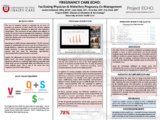 |
Pregnancy Care ECHO: Facilitating Physician & Midwifery Pregnancy Co-Management | Holloman, Jordan; Willis, Leah; Box, Terry; Clark, Erin | The care of pregnant women is managed by an array of providers at University of Utah Health Care (UUHC) ranging from Certified Nurse Midwives to Maternal Fetal Medicine obstetricians. This continuum of care options give patients a variety of choices in how to manage their pregnancy. Utilizing midwif... |
| 8 |
 |
Survey of Microbiology Education in Nursing | Brooks, Alexa; Doig, Alexa; Durrant, Robert; Buxton, Rebecca; Fenn, JoAnn | The purpose of this study was to survey nurses regarding their microbiology education and to determine the importance of specific topics and skills in current nursing practice. |
| 9 |
 |
Burn and Soft Tissue Injury ECHO:An Innovative Approach to Educating Interdisciplinary Teams | Keough, G; Box, T.; Willis, L.; Cochran, A. | The University of Utah is the only academic health care system in the Intermountain West, with a 5 state catchment area. The University of Utah covers the largest contiguous geographical area of any burn center in the nation and accounts for approximately 10% of the continental U.S. land mass. Proje... |
| 10 |
 |
Radial Access in STEMI Patients-Is it taking too long? A comparison of Radial against Femoral access for Door to Lidocaine, Lidocaine to Sheath, and Sheath to Vascularization times in STEMI Patients | Cornachione, Kristen; Owan, Theophilus | Use of radial access in cardiac catheterization procedures has been shown to have positive impact on reducing bleeding risk, but also lengthened procedure times. We compared two years of STEMI patient data to see if using radial as our default access has had any effect on our procedure times. Contra... |
| 11 |
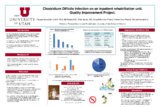 |
Clostridium Difficile Infection on an Inpatient Rehabilitation Unit - Quality Improvement Project | Gerachshenko, Tatyana; Wagner, Bill; Spivak, Emily; Benefield, Russell; Dean, Patrice; Kendall, Richard | Our Continuous Quality Improvement (CQI) project was focused on modifiable risk factors associated with Clostridium difficile infection (CDI) with ultimate goal to reduce CDI on the inpatient rehabilitation unit (IMR). The incidence of C. Diff on the rehabilitation unit was 7 case per year leading u... |
| 12 |
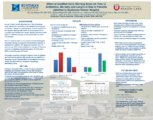 |
Effect of Modified Early Warning Score on Time to Antibiotics, Mortality and Length of Stay in Patients admitted to Huntsman Cancer Hospital | Banner, Melissa; Wright, Melissa Wright; Gamonal, Shirleen; Padilla-Romero, Sonia; Horton, Devin J.; Dunson, William; Graves, Kencee K. | Sepsis is most recently described as a "life-threatening organ dysfunction caused by a dysregulated host response to infection." Sepsis is a leading cause of death of patients in the hospital. Patients with cancer are at increased risk of morbidity and mortality from sepsis. Studies have shown that ... |
| 13 |
 |
Revising University of Utah Anti-Thrombosis Practices for Care of Patients Undergoing Cardiac Catheterization for Acute and Stable CAD | Sorensen, Teshia; Sledge;, Tyler; Cornachione, Kristen; Young, Dawn; Spangler, Cindy; Owan, Theophilus | Risk-Treatment Paradox: Bleeding Avoidance Strategies (BAS) are used the least in patients with the highest bleeding risk. Common BAS include use of: Anti-thrombosis agents at UUHC; Radial access; Closure device if femoral access; Small sheath size. |
| 14 |
 |
Effect of the mEWS Alert System on Sepsis Treatment | Ungricht, Emilie; Horten, Devin J.; Graves, Kencee K. | Sepsis is a suspected infection accompanied by a systemic inflammatory response. A systemic inflammatory response includes at least two of the following: an elevated heart rate, elevated temperature, elevated respiratory rate, or change in blood leukocyte count. Severe sepsis, in addition to the sep... |
| 15 |
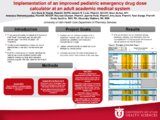 |
Implementation of an Improved Pediatric Emergency Drug Dose Calculator at an Adult Academic Medical System | Prazak, Ann Marie B.; Louie, Jessica M.; Barker, Brian; Diamantopoulos, Anastasia; Ghanem, Maureen; Rollo, Jeannie; Scott, Amy; Sledge, Tyler; Gauthier, Kristy; Wubbels, Alexandra | Three percent of patients treated at University of Utah Health Care each year are pediatric patients (age 1 month to 18 years; <30 kilograms). With an emphasis on collaboration among pharmacy, nursing, and informatics staff, we accomplished the projects goals and improved patient safety in our healt... |
| 16 |
 |
Pneumococcal Polysaccharide Vaccination Among Patients With Diabetes, Asthma, and Cigarette Use | Trovato, Anthony; Gunning, Karen; Pippitt, Karly | Streptococcus pneumoniae infection results in a variety of illnesses including ear and sinus infections, meningitis, and pneumonia. The Pneumovax 23 Vaccine (pneumococcal polysaccharide vaccine or PPSV23) helps protect against 23 strains of S. pneumoniae, and is indicated in adults 65 years old and ... |
| 17 |
 |
Improving Chlamydia Screening Through Universal Screening at Madsen Family Clinic | Wecker, Joel; Thaller, Tobi; McNamara, Sean; Locke, Amy Beth; Paisley, Ted; Hastings, Katherine | Chlamydia is a small gram negative bacteria, not much larger than most viruses. Operates as an intracellular parasite that tends to like columnar epithelial cells of the mucous membranes (commonly causing onjunctivitis, cervicitis, and pneumonia). The most common cause of Non-gonoccal urethritis. |
| 18 |
 |
Standardizing Follow-Up Visits as an Intervention to Improve Blood Pressure Control | Baird, Greg; Fortenberry, Katherine; Houchins, John; Riley-Burnett, Sarah; Abbey, Rebecca; Rolls, Joanne; Gunning, Karen | The prevalence of hypertension is greater than 25% in the United States. Our intervention did not change the scheduling or completion of follow-up appointments, suggesting that more intensive interventions than flyers and announcements are required for producing behavior change. Future interventions... |
| 19 |
 |
Improving Blood Pressure Control for Hypertensive Patients at a University of Utah Family Medicine Residency Clinic: A Continuous Quality Improvement Project | Helms, Erin; Najmabadi, Sakineh; Prince, Victoria; Li, Marlana;, Ortiz, Ana; Langell, Lisa; Boutet, Jovana; Miller, Jacob; Hill, Brian; Jones, Jessica | Uncontrolled home blood pressure is associated with increased risk for cardiovascular events, stroke, and all-cause mortality, independent of office BP [USPSTF]. By implementing a process for initiating home blood pressure monitoring (HBPM), we hope to improve BP control for our hypertensive patient... |
| 20 |
 |
Pediatric Immunization Rate Increase Project at Two University of Utah Clinics | Coriz, Garon; White, Charles; Jones, Kyle Bradford; Cochella, Susan; Chestnut, Robert; Whetzel, Jacob | The decrease in morbidity and mortality through the use of immunizations has been one of the greatest public health accomplishments in history. We strive to continue this trend. The eradication of smallpox through vaccination shows its great potential, saving millions of young lives worldwide. |
| 21 |
 |
Benefit Associated with Implementation of a Core Respiratory Therapist Team in the Neurocritical Unit | Campbell, Sumi; Hallin, Kirsten; Hawryluk, Gregory | A Core Respiratory Therapist (RT) Team was organized in 2015 to execute the Neurocritical Care Unit Ventilator Protocol and to improve responsiveness to the unique needs of neurological and neurosurgical patients. |
| 22 |
 |
Obstetric Hemorrhage ECHO: On a Mission to Reduce Postpartum Hemorrhages in Utah | Holloman, J.; Willis, L. Box, T; Clark, E.; Baksh, L. | The Utah Department of Health was awarded a grant from the Association of Maternal and Child Health Programs (AMCHP) in an effort to address the third leading cause of maternal mortality in Utah-postpartum hemorrhaging. The first aim of the initiative was to improve the maternal mortality review pro... |
| 23 |
 |
Increasing Chlamydia Screening at Sugarhouse Clinic through Workflow Redesign | Evans, Matt; MD; See, Melissa; Stoesser, Kirsten; Van Hala, Sonja; Knox, Jordan; Corcoran, Blake | The AAFP, USPSTF, ACOG, AAP, and CDC recommend annual Chlamydia screening of asymptomatic sexually active women ages 14-24. National Chlamydia (CT) screening rates average at 45% for commercial insurance and 57% for Medicaid. The institutional goal for the University of Utah (U of U) community clini... |
| 24 |
 |
Decreasing Inappropriate Telemetry Utilization in the Non-ICU Setting | Edholm, Karli; Carr, Jason; Gill, David; Rupp, Austin; Morshedzadeh, Jack | Telemetry monitoring is known to be over-utilized outside of the ICU, rarely leads to a change in management, and has never been shown to improve clinical outcomes. We demonstrate that implementation of a system-wide change to the EMR telemetry ordering process has, thus far, led to a 15% decrease i... |
| 25 |
 |
Improving Pneumococcal Polysaccharide 23-valent (Pneumovax) Vaccination Rates for Adults Age 18-64 with Asthma: CQI | Pippitt, Karly Ann; Fox, Alex; Galli, Vanessa M.; Hendrickson, Bryan | Our two University-based continuity clinics have excellent age based vaccination rates (nearly 90%), however disease based vaccination rates for younger individuals are not at similar levels. Prior CQI projects in our clinics have looked at disease based vaccination rates, and identified asthma as t... |
